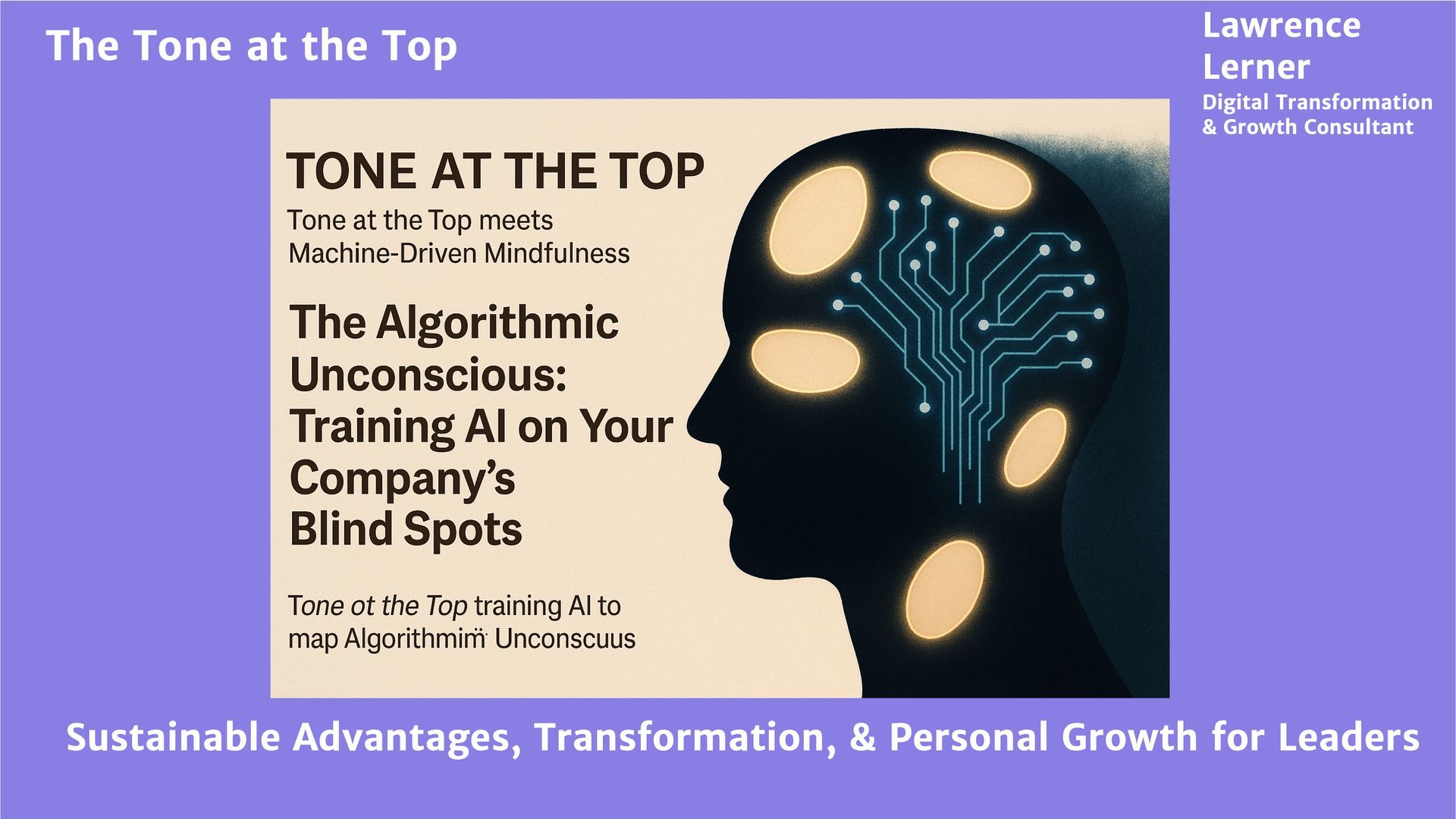In every organization, there are things left unsaid, undone, unnoticed. A meeting adjourns before the dissenting voice speaks. A dataset excludes edge cases that don’t “fit.” A customer journey ends abruptly because someone didn’t call back.
These aren’t random gaps. They’re systemic part of what we might call the organizational unconscious. Like the human mind, companies operate not only through deliberate strategy and conscious decision-making but also through reflex, habit, and blind spots. And while we’ve trained artificial intelligence to analyze our conscious patterns—spending trends, marketing conversion, churn—we’ve yet to permit it to look into what’s missing.
What if we did?
What if AI wasn’t just a mirror to our actions but a searchlight into our omissions?
AI as the new frontier: training AI to map the algorithmic unconscious—to find not what is, but what isn’t.
The Shadow Beneath Strategy
Traditional AI systems are exceptional at pattern recognition. Feed them data, and they’ll find trends. But the real innovation lies in noticing the absence of data itself: the customer segments we’ve never reached, the complaints that never made it to support, the internal feedback loops that quietly broke under the weight of old processes.
It’s easy to miss the invisible.
In cognitive psychology, this is known as inattentional blindness. We don’t see what we’re not looking for—even if it’s right in front of us. Organizations suffer from this same affliction. Leaders lean on dashboards and quarterly reports, believing the numbers tell the whole story. But beneath every KPI is a hidden stratum of skipped steps, avoided conversations, and brushed-aside ideas. These form the company’s blind spots—where risk, inefficiency, and cultural drift quietly accumulate.
AI, when trained correctly, can become the eyes that never blink in the dark.
Building the Algorithmic Unconscious
To train AI on what’s missing, we first need to reframe how we think about data.
Instead of treating absence as an error, we treat it as signal. We build models not just to evaluate what was recorded, but to ask: What should have been here? For instance:
- In sales, which warm leads inexplicably dropped off with no follow-up?
- In hiring, which candidate profiles are consistently filtered out before interview stages—and why?
- In product development, which user suggestions never made it into backlog grooming sessions?
- In compliance, which recurring issues seem “low risk” but haven’t been addressed in years?
We can train natural language models to flag passive language, omissions in tone, or critical information never mentioned. Sequence models can highlight broken patterns, such as high-performing employees never being recommended for promotion or product features requested but never being built despite repeated user input.
This is not about adding more data. It’s about listening more closely to silence.
From Insight to Self-Awareness
If “tone at the top” defines the ethical and cultural frequency of an organization, then the algorithmic unconscious tunes us to what lies just outside that frequency—what leaders aren’t seeing, saying, or supporting.
Here’s where the metaphysical becomes practical.
In Jungian terms, every organization has a shadow—the parts of itself it chooses not to look at. Often, these are the very dynamics that later surface as crisis: loss of talent, brand erosion, missed market shifts.
The goal isn’t to eliminate the shadow. It’s to illuminate it—to integrate the unconscious into the conscious. A well-trained AI takes this on: not to prescribe action, but to serve as a dispassionate observer of silence, surfacing the patterns of neglect with clarity and without judgment.
It’s less about data science and more about organizational mindfulness.
Leadership’s New Covenant with AI
This shift requires courage. It means moving beyond performance metrics into introspection. It means asking AI not just for answers, but for questions—especially the ones leaders might rather not hear.
Tone at the top becomes not just about modeling ethical behavior, but about creating a system that detects its own ethical drift. In practice, this means:
- Establishing data humility—acknowledging that your dashboards don’t show everything
- Embedding bias detection not only in hiring but in process design and decision matrices
- Training AI not just to score performance, but to audit blind assumptions
- Creating feedback loops where AI surfaces discomforting trends—and leaders listen
- This is not woo-woo. This is architecture for resilience.
Tone at the Top Reflection: A Leadership Mirror
The tone at the top isn’t just set by what leaders say—it’s echoed in what they choose not to address.
In the age of AI, the most powerful leadership act may not be bold declarations or aggressive digital transformation. It may be the willingness to ask, What are we not seeing?—and to let AI help answer it.
When leaders model curiosity over certainty, when they treat omissions as opportunities for growth rather than liabilities to hide, they give their organization permission to evolve. This is where tone becomes transformation: when ethical leadership and technological introspection align.
Ask yourself:
· Where in your business are patterns breaking but no one is tracking them?
· What customer groups or internal voices were excluded?
· Are your metrics confirming what you hope is true—or exposing what you fear might be?
The real tone at the top is this: not just asking “What’s the story?” but “What’s the silence beneath the story?”
Because what leadership ignores, the culture quietly absorbs. And what remains unconscious today will shape tomorrow’s headlines—good or bad.
Leaders who embrace the algorithmic unconscious don’t just future-proof their companies. They humanize them—with humility, clarity, and a commitment to seeing the whole picture, even the parts that hurt.
The Bottom Line: Risk Reduction Through Consciousness
The companies that survive aren’t always the most optimized. They’re the most self-aware. They see themselves clearly, especially in the mirror of their own contradictions.
Training AI on your company’s algorithmic unconscious reduces risk—not just compliance risk, but cultural, strategic, and reputational risk. It fosters agility—not just operational, but cognitive. And it builds a workforce that doesn’t just execute, but reflects.
In a world where uncertainty is the only constant, your competitive advantage is not speed, not scale—but the courage to see what’s been missing.
Start there. Train your AI not just on data, but on what the data avoids. Let it be your whisper in the boardroom. Not a prophet, but a quiet guide—asking the questions no one else dares to.

